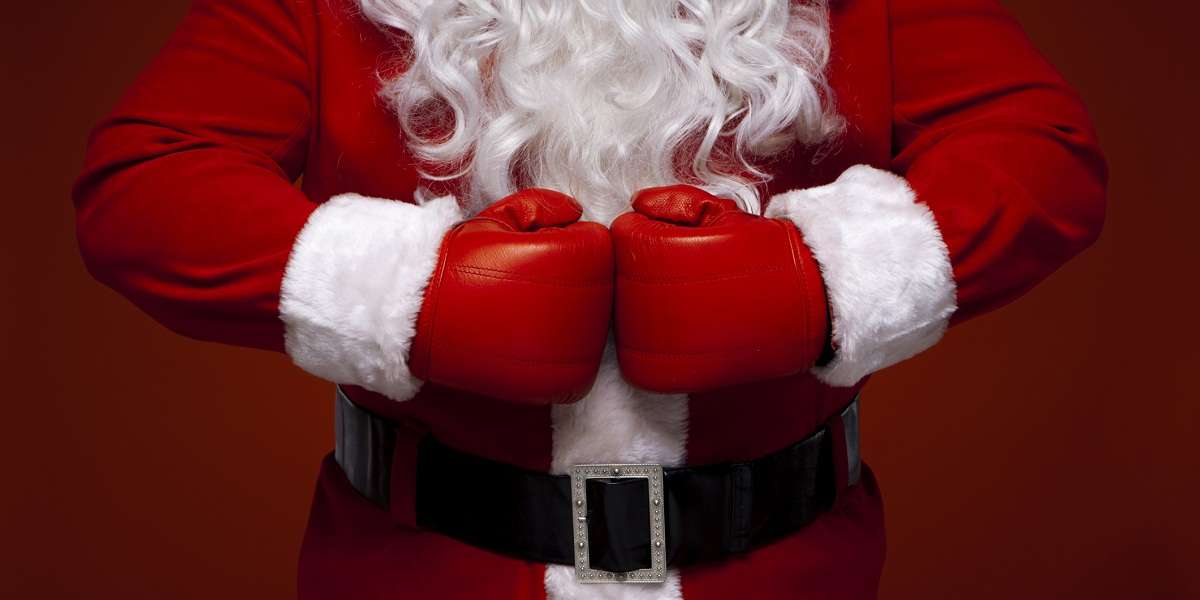In A Nutshell
Every Christmas, the Andean citizens of the Chumbivilcas province settle their grudges during the fighting festival of Takanakuy. All legal disputes and personal issues are solved when these people go toe-to-toe in bloody MMA-style matches. In addition to these Christmastime brawls, revelers wear wild costumes, sing, dance, and consume copious quantities of alcohol.
The Whole Bushel
Everybody knows that Christmas is a time of peace on Earth and good will toward men . . . unless you live in the Chumbivilcas province of Peru where Christmas is a time of punching your neighbor in the face. While the rest of us are opening presents, the Andean people are celebrating the violently awesome festival of Takanakuy which involves music, alcohol, and fisticuffs.
Takanakuy (which translates into “when the blood is boiling” in Quechua) originated in Santo Tomas, a city separated from the rest of civilization by the Andes Mountains. With a grand total of three police officers, and with the nearest courthouse over 12 hours away, the citizens of Santo Tomas had to devise their own way of dealing with tricky legal issues. So they came up with a plan that would make Tyler Durden proud: They set up an annual boxing match. The premise is pretty simple. If your neighbor steals your livestock or destroys your property, then you wait till Christmas and throw down. It’s basically trial by combat, and whoever wins the fight wins the case. And it’s not just legal disputes that are resolved with MMA bouts. Maybe your co-worker called you a name you can’t repeat, or perhaps your best bud ran off with your girlfriend. If you’re still harboring a grudge come Takanakuy, then Christmas is the day to take revenge. Of course, you don’t have to have a grievance to participate. Plenty of people just want to have a good fight, and everybody—from men and women to children and elders—is allowed to scrap.
The festivities start a few days before Christmas, and involve music, dancing, lots of booze, and crazy costumes. The contestants pull on chaps and brightly colored ski masks, complete with taxidermied birds and foxes on top of their heads. Some even dress as particular characters from local history. For example, some show up as the “Langosta,” symbolic of locust plagues, and wear shiny raincoats to mimic the insect’s body. Others dress up as the “Negro” (which actually represents slave owners) and wear embroidered capes and cardboard crowns. But when it’s finally time to fight, the ski masks come off, and things get touchy-feely. Before the match starts, combatants have to give each other a hug or at least shake each others’ hands, and then they go to town. They wrap their fists with scarves and start throwing haymakers and front kicks at their opponents as nearby women set the mood by playing accordions, harps, and violins while singing about rivers of blood. As the contestants slug it out, a referee keeps a close watch on the proceedings, making sure that there’s no biting and no hitting a downed opponent. And if someone breaks the rules, the ref beats the violator with a whip. When the fight is finally over and all the old scores are settled, the winner and the loser give each other one last hug, and everybody is on friendly terms again. Thanks to the bloody festival of Takanakuy, the province is full of peace and harmony . . . until next year.
Show Me The Proof
Vice: Christmas in the Andes (video)
BBC Travel: Peru’s Christmas Fighting Festival
In A Nutshell
Every Christmas, the Andean citizens of the Chumbivilcas province settle their grudges during the fighting festival of Takanakuy. All legal disputes and personal issues are solved when these people go toe-to-toe in bloody MMA-style matches. In addition to these Christmastime brawls, revelers wear wild costumes, sing, dance, and consume copious quantities of alcohol.
The Whole Bushel
Everybody knows that Christmas is a time of peace on Earth and good will toward men . . . unless you live in the Chumbivilcas province of Peru where Christmas is a time of punching your neighbor in the face. While the rest of us are opening presents, the Andean people are celebrating the violently awesome festival of Takanakuy which involves music, alcohol, and fisticuffs.
Takanakuy (which translates into “when the blood is boiling” in Quechua) originated in Santo Tomas, a city separated from the rest of civilization by the Andes Mountains. With a grand total of three police officers, and with the nearest courthouse over 12 hours away, the citizens of Santo Tomas had to devise their own way of dealing with tricky legal issues. So they came up with a plan that would make Tyler Durden proud: They set up an annual boxing match. The premise is pretty simple. If your neighbor steals your livestock or destroys your property, then you wait till Christmas and throw down. It’s basically trial by combat, and whoever wins the fight wins the case. And it’s not just legal disputes that are resolved with MMA bouts. Maybe your co-worker called you a name you can’t repeat, or perhaps your best bud ran off with your girlfriend. If you’re still harboring a grudge come Takanakuy, then Christmas is the day to take revenge. Of course, you don’t have to have a grievance to participate. Plenty of people just want to have a good fight, and everybody—from men and women to children and elders—is allowed to scrap.
The festivities start a few days before Christmas, and involve music, dancing, lots of booze, and crazy costumes. The contestants pull on chaps and brightly colored ski masks, complete with taxidermied birds and foxes on top of their heads. Some even dress as particular characters from local history. For example, some show up as the “Langosta,” symbolic of locust plagues, and wear shiny raincoats to mimic the insect’s body. Others dress up as the “Negro” (which actually represents slave owners) and wear embroidered capes and cardboard crowns. But when it’s finally time to fight, the ski masks come off, and things get touchy-feely. Before the match starts, combatants have to give each other a hug or at least shake each others’ hands, and then they go to town. They wrap their fists with scarves and start throwing haymakers and front kicks at their opponents as nearby women set the mood by playing accordions, harps, and violins while singing about rivers of blood. As the contestants slug it out, a referee keeps a close watch on the proceedings, making sure that there’s no biting and no hitting a downed opponent. And if someone breaks the rules, the ref beats the violator with a whip. When the fight is finally over and all the old scores are settled, the winner and the loser give each other one last hug, and everybody is on friendly terms again. Thanks to the bloody festival of Takanakuy, the province is full of peace and harmony . . . until next year.
Show Me The Proof
Vice: Christmas in the Andes (video)
BBC Travel: Peru’s Christmas Fighting Festival
In A Nutshell
Every Christmas, the Andean citizens of the Chumbivilcas province settle their grudges during the fighting festival of Takanakuy. All legal disputes and personal issues are solved when these people go toe-to-toe in bloody MMA-style matches. In addition to these Christmastime brawls, revelers wear wild costumes, sing, dance, and consume copious quantities of alcohol.
The Whole Bushel
Everybody knows that Christmas is a time of peace on Earth and good will toward men . . . unless you live in the Chumbivilcas province of Peru where Christmas is a time of punching your neighbor in the face. While the rest of us are opening presents, the Andean people are celebrating the violently awesome festival of Takanakuy which involves music, alcohol, and fisticuffs.
Takanakuy (which translates into “when the blood is boiling” in Quechua) originated in Santo Tomas, a city separated from the rest of civilization by the Andes Mountains. With a grand total of three police officers, and with the nearest courthouse over 12 hours away, the citizens of Santo Tomas had to devise their own way of dealing with tricky legal issues. So they came up with a plan that would make Tyler Durden proud: They set up an annual boxing match. The premise is pretty simple. If your neighbor steals your livestock or destroys your property, then you wait till Christmas and throw down. It’s basically trial by combat, and whoever wins the fight wins the case. And it’s not just legal disputes that are resolved with MMA bouts. Maybe your co-worker called you a name you can’t repeat, or perhaps your best bud ran off with your girlfriend. If you’re still harboring a grudge come Takanakuy, then Christmas is the day to take revenge. Of course, you don’t have to have a grievance to participate. Plenty of people just want to have a good fight, and everybody—from men and women to children and elders—is allowed to scrap.
The festivities start a few days before Christmas, and involve music, dancing, lots of booze, and crazy costumes. The contestants pull on chaps and brightly colored ski masks, complete with taxidermied birds and foxes on top of their heads. Some even dress as particular characters from local history. For example, some show up as the “Langosta,” symbolic of locust plagues, and wear shiny raincoats to mimic the insect’s body. Others dress up as the “Negro” (which actually represents slave owners) and wear embroidered capes and cardboard crowns. But when it’s finally time to fight, the ski masks come off, and things get touchy-feely. Before the match starts, combatants have to give each other a hug or at least shake each others’ hands, and then they go to town. They wrap their fists with scarves and start throwing haymakers and front kicks at their opponents as nearby women set the mood by playing accordions, harps, and violins while singing about rivers of blood. As the contestants slug it out, a referee keeps a close watch on the proceedings, making sure that there’s no biting and no hitting a downed opponent. And if someone breaks the rules, the ref beats the violator with a whip. When the fight is finally over and all the old scores are settled, the winner and the loser give each other one last hug, and everybody is on friendly terms again. Thanks to the bloody festival of Takanakuy, the province is full of peace and harmony . . . until next year.
Show Me The Proof
Vice: Christmas in the Andes (video)
BBC Travel: Peru’s Christmas Fighting Festival
In A Nutshell
Every Christmas, the Andean citizens of the Chumbivilcas province settle their grudges during the fighting festival of Takanakuy. All legal disputes and personal issues are solved when these people go toe-to-toe in bloody MMA-style matches. In addition to these Christmastime brawls, revelers wear wild costumes, sing, dance, and consume copious quantities of alcohol.
The Whole Bushel
Everybody knows that Christmas is a time of peace on Earth and good will toward men . . . unless you live in the Chumbivilcas province of Peru where Christmas is a time of punching your neighbor in the face. While the rest of us are opening presents, the Andean people are celebrating the violently awesome festival of Takanakuy which involves music, alcohol, and fisticuffs.
Takanakuy (which translates into “when the blood is boiling” in Quechua) originated in Santo Tomas, a city separated from the rest of civilization by the Andes Mountains. With a grand total of three police officers, and with the nearest courthouse over 12 hours away, the citizens of Santo Tomas had to devise their own way of dealing with tricky legal issues. So they came up with a plan that would make Tyler Durden proud: They set up an annual boxing match. The premise is pretty simple. If your neighbor steals your livestock or destroys your property, then you wait till Christmas and throw down. It’s basically trial by combat, and whoever wins the fight wins the case. And it’s not just legal disputes that are resolved with MMA bouts. Maybe your co-worker called you a name you can’t repeat, or perhaps your best bud ran off with your girlfriend. If you’re still harboring a grudge come Takanakuy, then Christmas is the day to take revenge. Of course, you don’t have to have a grievance to participate. Plenty of people just want to have a good fight, and everybody—from men and women to children and elders—is allowed to scrap.
The festivities start a few days before Christmas, and involve music, dancing, lots of booze, and crazy costumes. The contestants pull on chaps and brightly colored ski masks, complete with taxidermied birds and foxes on top of their heads. Some even dress as particular characters from local history. For example, some show up as the “Langosta,” symbolic of locust plagues, and wear shiny raincoats to mimic the insect’s body. Others dress up as the “Negro” (which actually represents slave owners) and wear embroidered capes and cardboard crowns. But when it’s finally time to fight, the ski masks come off, and things get touchy-feely. Before the match starts, combatants have to give each other a hug or at least shake each others’ hands, and then they go to town. They wrap their fists with scarves and start throwing haymakers and front kicks at their opponents as nearby women set the mood by playing accordions, harps, and violins while singing about rivers of blood. As the contestants slug it out, a referee keeps a close watch on the proceedings, making sure that there’s no biting and no hitting a downed opponent. And if someone breaks the rules, the ref beats the violator with a whip. When the fight is finally over and all the old scores are settled, the winner and the loser give each other one last hug, and everybody is on friendly terms again. Thanks to the bloody festival of Takanakuy, the province is full of peace and harmony . . . until next year.
Show Me The Proof
Vice: Christmas in the Andes (video)
BBC Travel: Peru’s Christmas Fighting Festival
In A Nutshell
Every Christmas, the Andean citizens of the Chumbivilcas province settle their grudges during the fighting festival of Takanakuy. All legal disputes and personal issues are solved when these people go toe-to-toe in bloody MMA-style matches. In addition to these Christmastime brawls, revelers wear wild costumes, sing, dance, and consume copious quantities of alcohol.
The Whole Bushel
Everybody knows that Christmas is a time of peace on Earth and good will toward men . . . unless you live in the Chumbivilcas province of Peru where Christmas is a time of punching your neighbor in the face. While the rest of us are opening presents, the Andean people are celebrating the violently awesome festival of Takanakuy which involves music, alcohol, and fisticuffs.
Takanakuy (which translates into “when the blood is boiling” in Quechua) originated in Santo Tomas, a city separated from the rest of civilization by the Andes Mountains. With a grand total of three police officers, and with the nearest courthouse over 12 hours away, the citizens of Santo Tomas had to devise their own way of dealing with tricky legal issues. So they came up with a plan that would make Tyler Durden proud: They set up an annual boxing match. The premise is pretty simple. If your neighbor steals your livestock or destroys your property, then you wait till Christmas and throw down. It’s basically trial by combat, and whoever wins the fight wins the case. And it’s not just legal disputes that are resolved with MMA bouts. Maybe your co-worker called you a name you can’t repeat, or perhaps your best bud ran off with your girlfriend. If you’re still harboring a grudge come Takanakuy, then Christmas is the day to take revenge. Of course, you don’t have to have a grievance to participate. Plenty of people just want to have a good fight, and everybody—from men and women to children and elders—is allowed to scrap.
The festivities start a few days before Christmas, and involve music, dancing, lots of booze, and crazy costumes. The contestants pull on chaps and brightly colored ski masks, complete with taxidermied birds and foxes on top of their heads. Some even dress as particular characters from local history. For example, some show up as the “Langosta,” symbolic of locust plagues, and wear shiny raincoats to mimic the insect’s body. Others dress up as the “Negro” (which actually represents slave owners) and wear embroidered capes and cardboard crowns. But when it’s finally time to fight, the ski masks come off, and things get touchy-feely. Before the match starts, combatants have to give each other a hug or at least shake each others’ hands, and then they go to town. They wrap their fists with scarves and start throwing haymakers and front kicks at their opponents as nearby women set the mood by playing accordions, harps, and violins while singing about rivers of blood. As the contestants slug it out, a referee keeps a close watch on the proceedings, making sure that there’s no biting and no hitting a downed opponent. And if someone breaks the rules, the ref beats the violator with a whip. When the fight is finally over and all the old scores are settled, the winner and the loser give each other one last hug, and everybody is on friendly terms again. Thanks to the bloody festival of Takanakuy, the province is full of peace and harmony . . . until next year.
Show Me The Proof
Vice: Christmas in the Andes (video)
BBC Travel: Peru’s Christmas Fighting Festival
In A Nutshell
Every Christmas, the Andean citizens of the Chumbivilcas province settle their grudges during the fighting festival of Takanakuy. All legal disputes and personal issues are solved when these people go toe-to-toe in bloody MMA-style matches. In addition to these Christmastime brawls, revelers wear wild costumes, sing, dance, and consume copious quantities of alcohol.
The Whole Bushel
Everybody knows that Christmas is a time of peace on Earth and good will toward men . . . unless you live in the Chumbivilcas province of Peru where Christmas is a time of punching your neighbor in the face. While the rest of us are opening presents, the Andean people are celebrating the violently awesome festival of Takanakuy which involves music, alcohol, and fisticuffs.
Takanakuy (which translates into “when the blood is boiling” in Quechua) originated in Santo Tomas, a city separated from the rest of civilization by the Andes Mountains. With a grand total of three police officers, and with the nearest courthouse over 12 hours away, the citizens of Santo Tomas had to devise their own way of dealing with tricky legal issues. So they came up with a plan that would make Tyler Durden proud: They set up an annual boxing match. The premise is pretty simple. If your neighbor steals your livestock or destroys your property, then you wait till Christmas and throw down. It’s basically trial by combat, and whoever wins the fight wins the case. And it’s not just legal disputes that are resolved with MMA bouts. Maybe your co-worker called you a name you can’t repeat, or perhaps your best bud ran off with your girlfriend. If you’re still harboring a grudge come Takanakuy, then Christmas is the day to take revenge. Of course, you don’t have to have a grievance to participate. Plenty of people just want to have a good fight, and everybody—from men and women to children and elders—is allowed to scrap.
The festivities start a few days before Christmas, and involve music, dancing, lots of booze, and crazy costumes. The contestants pull on chaps and brightly colored ski masks, complete with taxidermied birds and foxes on top of their heads. Some even dress as particular characters from local history. For example, some show up as the “Langosta,” symbolic of locust plagues, and wear shiny raincoats to mimic the insect’s body. Others dress up as the “Negro” (which actually represents slave owners) and wear embroidered capes and cardboard crowns. But when it’s finally time to fight, the ski masks come off, and things get touchy-feely. Before the match starts, combatants have to give each other a hug or at least shake each others’ hands, and then they go to town. They wrap their fists with scarves and start throwing haymakers and front kicks at their opponents as nearby women set the mood by playing accordions, harps, and violins while singing about rivers of blood. As the contestants slug it out, a referee keeps a close watch on the proceedings, making sure that there’s no biting and no hitting a downed opponent. And if someone breaks the rules, the ref beats the violator with a whip. When the fight is finally over and all the old scores are settled, the winner and the loser give each other one last hug, and everybody is on friendly terms again. Thanks to the bloody festival of Takanakuy, the province is full of peace and harmony . . . until next year.
Show Me The Proof
Vice: Christmas in the Andes (video)
BBC Travel: Peru’s Christmas Fighting Festival
In A Nutshell
Every Christmas, the Andean citizens of the Chumbivilcas province settle their grudges during the fighting festival of Takanakuy. All legal disputes and personal issues are solved when these people go toe-to-toe in bloody MMA-style matches. In addition to these Christmastime brawls, revelers wear wild costumes, sing, dance, and consume copious quantities of alcohol.
The Whole Bushel
Everybody knows that Christmas is a time of peace on Earth and good will toward men . . . unless you live in the Chumbivilcas province of Peru where Christmas is a time of punching your neighbor in the face. While the rest of us are opening presents, the Andean people are celebrating the violently awesome festival of Takanakuy which involves music, alcohol, and fisticuffs.
Takanakuy (which translates into “when the blood is boiling” in Quechua) originated in Santo Tomas, a city separated from the rest of civilization by the Andes Mountains. With a grand total of three police officers, and with the nearest courthouse over 12 hours away, the citizens of Santo Tomas had to devise their own way of dealing with tricky legal issues. So they came up with a plan that would make Tyler Durden proud: They set up an annual boxing match. The premise is pretty simple. If your neighbor steals your livestock or destroys your property, then you wait till Christmas and throw down. It’s basically trial by combat, and whoever wins the fight wins the case. And it’s not just legal disputes that are resolved with MMA bouts. Maybe your co-worker called you a name you can’t repeat, or perhaps your best bud ran off with your girlfriend. If you’re still harboring a grudge come Takanakuy, then Christmas is the day to take revenge. Of course, you don’t have to have a grievance to participate. Plenty of people just want to have a good fight, and everybody—from men and women to children and elders—is allowed to scrap.
The festivities start a few days before Christmas, and involve music, dancing, lots of booze, and crazy costumes. The contestants pull on chaps and brightly colored ski masks, complete with taxidermied birds and foxes on top of their heads. Some even dress as particular characters from local history. For example, some show up as the “Langosta,” symbolic of locust plagues, and wear shiny raincoats to mimic the insect’s body. Others dress up as the “Negro” (which actually represents slave owners) and wear embroidered capes and cardboard crowns. But when it’s finally time to fight, the ski masks come off, and things get touchy-feely. Before the match starts, combatants have to give each other a hug or at least shake each others’ hands, and then they go to town. They wrap their fists with scarves and start throwing haymakers and front kicks at their opponents as nearby women set the mood by playing accordions, harps, and violins while singing about rivers of blood. As the contestants slug it out, a referee keeps a close watch on the proceedings, making sure that there’s no biting and no hitting a downed opponent. And if someone breaks the rules, the ref beats the violator with a whip. When the fight is finally over and all the old scores are settled, the winner and the loser give each other one last hug, and everybody is on friendly terms again. Thanks to the bloody festival of Takanakuy, the province is full of peace and harmony . . . until next year.
Show Me The Proof
Vice: Christmas in the Andes (video)
BBC Travel: Peru’s Christmas Fighting Festival
In A Nutshell
Every Christmas, the Andean citizens of the Chumbivilcas province settle their grudges during the fighting festival of Takanakuy. All legal disputes and personal issues are solved when these people go toe-to-toe in bloody MMA-style matches. In addition to these Christmastime brawls, revelers wear wild costumes, sing, dance, and consume copious quantities of alcohol.
The Whole Bushel
Everybody knows that Christmas is a time of peace on Earth and good will toward men . . . unless you live in the Chumbivilcas province of Peru where Christmas is a time of punching your neighbor in the face. While the rest of us are opening presents, the Andean people are celebrating the violently awesome festival of Takanakuy which involves music, alcohol, and fisticuffs.
Takanakuy (which translates into “when the blood is boiling” in Quechua) originated in Santo Tomas, a city separated from the rest of civilization by the Andes Mountains. With a grand total of three police officers, and with the nearest courthouse over 12 hours away, the citizens of Santo Tomas had to devise their own way of dealing with tricky legal issues. So they came up with a plan that would make Tyler Durden proud: They set up an annual boxing match. The premise is pretty simple. If your neighbor steals your livestock or destroys your property, then you wait till Christmas and throw down. It’s basically trial by combat, and whoever wins the fight wins the case. And it’s not just legal disputes that are resolved with MMA bouts. Maybe your co-worker called you a name you can’t repeat, or perhaps your best bud ran off with your girlfriend. If you’re still harboring a grudge come Takanakuy, then Christmas is the day to take revenge. Of course, you don’t have to have a grievance to participate. Plenty of people just want to have a good fight, and everybody—from men and women to children and elders—is allowed to scrap.
The festivities start a few days before Christmas, and involve music, dancing, lots of booze, and crazy costumes. The contestants pull on chaps and brightly colored ski masks, complete with taxidermied birds and foxes on top of their heads. Some even dress as particular characters from local history. For example, some show up as the “Langosta,” symbolic of locust plagues, and wear shiny raincoats to mimic the insect’s body. Others dress up as the “Negro” (which actually represents slave owners) and wear embroidered capes and cardboard crowns. But when it’s finally time to fight, the ski masks come off, and things get touchy-feely. Before the match starts, combatants have to give each other a hug or at least shake each others’ hands, and then they go to town. They wrap their fists with scarves and start throwing haymakers and front kicks at their opponents as nearby women set the mood by playing accordions, harps, and violins while singing about rivers of blood. As the contestants slug it out, a referee keeps a close watch on the proceedings, making sure that there’s no biting and no hitting a downed opponent. And if someone breaks the rules, the ref beats the violator with a whip. When the fight is finally over and all the old scores are settled, the winner and the loser give each other one last hug, and everybody is on friendly terms again. Thanks to the bloody festival of Takanakuy, the province is full of peace and harmony . . . until next year.
Show Me The Proof
Vice: Christmas in the Andes (video)
BBC Travel: Peru’s Christmas Fighting Festival












